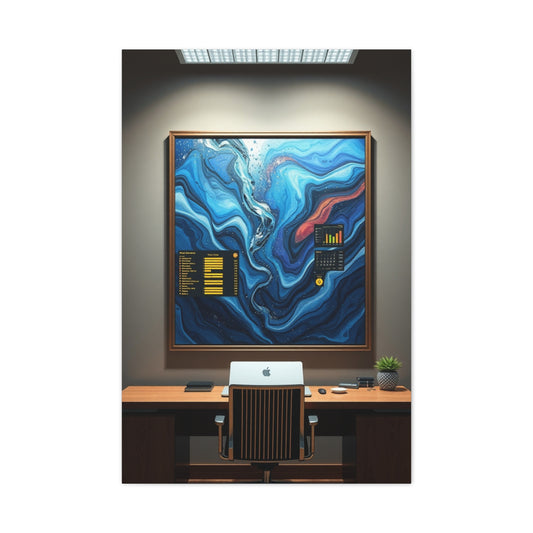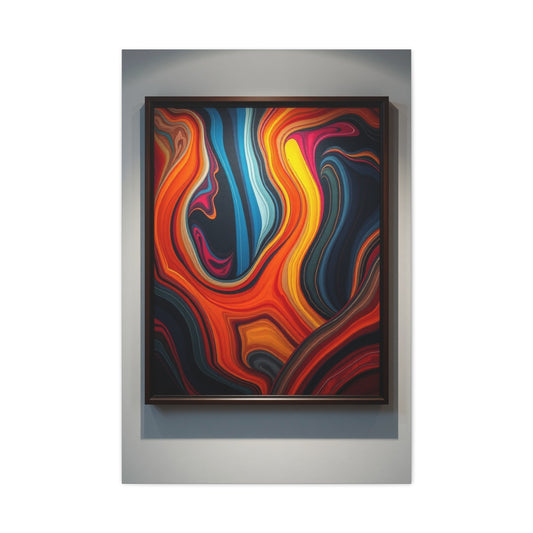The convergence of high dynamic range (HDR) methodology with panoramic stitching represents a paradigmatic advancement in contemporary landscape imaging. This sophisticated combination transcends traditional photographic limitations, enabling artists to capture expansive vistas with unprecedented tonal depth and architectural detail. Through meticulous analysis and extensive field experimentation, this approach has proven invaluable for photographers seeking to overcome the inherent constraints of single-exposure capture systems.
The amalgamation of these complementary techniques addresses fundamental challenges endemic to landscape documentation. Modern digital sensors, despite remarkable technological advancement, remain constrained by dynamic range limitations that pale in comparison to human visual perception. When confronted with high-contrast environments typical of mountainous terrain, coastal regions, or architectural subjects, conventional single-exposure methods often necessitate compromising either shadow detail or highlight information.
This comprehensive exploration examines the methodological intricacies of combining HDR processing with panoramic stitching, providing photographers with systematic approaches for achieving exceptional results. The techniques discussed transcend mere technical execution, encompassing artistic considerations that elevate the final imagery beyond conventional documentation toward compelling visual narratives.
The terminology employed throughout this discourse maintains precise distinctions between panoramic capture (multiple adjacent frames combined into singular compositions) and landscape photography (single-frame capture). This differentiation becomes crucial when discussing processing workflows, equipment requirements, and field techniques specific to each approach.
Fundamental Principles of Dynamic Range Enhancement
Dynamic range refers to the ratio between the brightest and darkest elements within a photograph. Traditional cameras, despite their remarkable advancements, have limited dynamic range, often struggling to properly expose scenes with both very bright highlights and very dark shadows. High dynamic range (HDR) photography was developed to overcome this limitation by merging multiple exposures, capturing the complete tonal range of a scene and producing a final image that mirrors the vast range of brightness the human eye perceives. This technique opens the door to extraordinary possibilities in capturing landscapes, interiors, and high-contrast scenes.
The Science Behind High Dynamic Range Photography
At its core, HDR photography compensates for the sensor's inability to capture extreme highlights and shadows in a single exposure. Most modern cameras, whether DSLRs or mirrorless systems, can record dynamic ranges of approximately 8 to 12 stops. In contrast, the human eye can perceive a dynamic range of over 20 stops, allowing us to see both deep shadows and bright highlights simultaneously. This discrepancy has been a significant challenge for photographers, especially in scenes like sunsets or harshly lit interiors.
HDR photography addresses this limitation through exposure bracketing, a technique where a photographer takes multiple images of the same scene at different exposure levels. Typically, these exposures span across two to three exposure value (EV) increments, with one image overexposed to capture highlight details, one underexposed for shadow information, and one correctly exposed as a baseline. By merging these images in post-processing software, the photographer can create a final image that includes every tonal value, from the darkest shadows to the brightest highlights, resulting in a photograph that preserves details across the entire scene.
The Capture Process: Exposure Bracketing and Merging
The exposure bracketing technique involves capturing multiple shots at various exposure levels to create a comprehensive tonal range. This process can be done manually by adjusting the exposure settings between each shot, or it can be automated using the camera's built-in bracketing feature. Once the exposures are captured, specialized software such as Adobe Photoshop, Lightroom, or dedicated HDR programs, like Photomatix, are used to merge the images into a single composite.
This merging process employs advanced algorithms that align the images, remove ghosting artifacts, and seamlessly blend the exposures to create a balanced image. The resulting HDR image retains high levels of detail in both shadowed areas and highlights, ensuring that none of the tonal values are lost. For maximum flexibility, photographers often prefer to shoot in RAW format, as this preserves the most tonal data, ensuring that each exposure has the highest potential for post-processing adjustments.
While HDR can be achieved manually, many modern cameras now offer automatic HDR processing. These cameras take multiple exposures in rapid succession and combine them internally to produce a single image. However, these automatically generated images often have limitations. They tend to use lower bit depths and apply compression, which sacrifices fine details and subtle tonal variations that can be retained through a more deliberate, professional workflow using RAW files.
HDR and RAW Workflow: Maximizing Post-Processing Potential
To truly harness the power of HDR, a RAW file workflow is essential. RAW files contain the unprocessed sensor data, which retains the maximum amount of tonal and color information from each exposure. In post-processing, these files can be adjusted to a far greater degree than JPEG images, allowing for more precise control over exposure, color grading, and tonal balance.
By shooting in RAW and bracketing exposures manually, photographers gain complete control over how the image is merged and processed, enabling them to fine-tune the final result to their exact specifications. This flexibility is especially useful in high-contrast scenes where subtle tonal shifts are necessary to avoid the harsh, unnatural look often associated with poorly processed HDR images.
For example, a photographer capturing a landscape at sunset would shoot multiple exposures to capture both the rich colors in the sky and the shadowed details of the foreground. In post-processing, the photographer can adjust each exposure's brightness and contrast, carefully blending them to create a seamless final image that retains the detail in both the bright sky and the dark ground.
HDR in Panoramic Photography: Enhancing Detail in Wide-Scale Scenes
The HDR technique is particularly valuable in panoramic photography, where the scene's dynamic range can often exceed what a camera can capture in a single shot. Wide-angle views of landscapes, cityscapes, or architectural interiors often contain both extremely bright areas (such as a sky or a reflective surface) and deep shadowed regions (such as mountain valleys or indoor spaces). In these cases, HDR allows the photographer to maintain detail in both extremes, creating a more visually complete and impactful image.
When shooting panoramic images, the photographer often needs to take multiple shots across the scene to cover the entire width of the composition. Each of these shots may require exposure bracketing, ensuring that the highlights and shadows in every part of the scene are captured in detail. By combining these multiple exposures for each shot in the panorama, and then stitching the individual HDR images together, the photographer can create a final panoramic image with enhanced dynamic range, superior clarity, and detail across the entire scene.
For example, during dawn or dusk, when natural lighting is in flux, HDR panoramas can preserve the glowing sky and the subtle details in the landscape. Without HDR, portions of the sky may become overexposed, while other parts of the scene could remain too dark to discern important details. HDR helps overcome these limitations, enabling a balanced and lifelike representation of the entire scene.
HDR in Architecture: Capturing Interior and Exterior Contrast
Architectural photography presents unique challenges due to the high contrast between the interior and exterior of buildings. Whether capturing a brightly lit façade against a shadowed building or photographing an interior with windows that let in harsh sunlight, dynamic range limitations can result in portions of the image becoming overly dark or washed out. HDR techniques are invaluable in these situations.
In architectural HDR photography, exposure bracketing can be particularly effective when shooting interiors with large windows. A common challenge is that the bright outdoor light often causes the indoor areas to be underexposed. HDR compensates for this imbalance by blending exposures of both the exterior (capturing details in the sky and distant features) and the interior (showing intricate textures and lighting within the room). This allows the photographer to create an image that faithfully represents both the natural light and the architectural elements without compromising on detail.
Beyond traditional building exteriors, HDR is essential when capturing intricate interior details, such as during real estate or design photography. Often, the interior lighting of a room can cast shadows, while sunlight streaming through the windows creates extreme brightness. HDR ensures that every aspect of the scene is visible, from the shadows beneath the furniture to the highlights of the room's most illuminated corners.
The Aesthetic Considerations of HDR: Striking a Natural Balance
While HDR is an extremely powerful tool, it requires careful handling to avoid creating images that look unnatural or "overcooked." The exaggerated tonal contrasts and vibrant colors often associated with the "HDR look" have become a subject of criticism among photographers and viewers alike. In this context, HDR is not just a technical tool but also an artistic choice, and its success lies in the photographer's ability to balance the enhanced dynamic range with the natural beauty of the scene.
A key challenge in HDR processing is ensuring that the final image maintains a sense of authenticity and realism. The enhanced dynamic range should be used to reveal details that would otherwise be hidden in the shadows or overexposed highlights. However, it is crucial to avoid going overboard with saturation, contrast, or sharpening, which can result in an artificial and unappealing image.
When applying HDR to a scene, it is important to emphasize the natural tonal relationships that exist within the scene. Photographers can mitigate the "HDR look" by carefully adjusting the tone-mapping process, reducing the contrast, and applying subtle adjustments to color and brightness. The goal is to maintain a realistic and visually balanced representation of the scene while still taking advantage of the expanded tonal range HDR offers.
Essential Equipment Configuration and Selection
Camera body selection significantly influences HDR panoramic success, with certain features proving indispensable for optimal results. Exposure bracketing functionality represents the most crucial capability, enabling automated capture sequences without manual intervention between frames. Advanced models offering user-defined setting banks facilitate rapid configuration changes essential for efficient field operation.
Manual exposure control becomes paramount when executing panoramic sequences, ensuring consistent exposure relationships between adjacent frames destined for stitching. Aperture priority modes, while suitable for single-point HDR capture, introduce exposure variations across panoramic sequences that complicate subsequent processing. Manual mode operation guarantees exposure consistency across the complete panoramic sweep.
Viewfinder grid displays provide invaluable assistance for maintaining horizontal alignment throughout panoramic capture sequences. These unobtrusive reference lines enable precise camera positioning, particularly crucial when working with subjects containing prominent horizontal elements such as water surfaces or architectural features. Proper alignment during capture minimizes subsequent cropping requirements and maintains compositional integrity.
Professional-grade tripod systems prove indispensable for achieving optimal HDR panoramic results. Carbon fiber construction provides excellent stability while minimizing weight penalties during extended field sessions. Ball heads incorporating independent rotation mechanisms enable smooth panoramic movement without disturbing vertical positioning. The investment in quality support equipment pays dividends through improved sharpness and simplified field operation.
Remote release systems eliminate camera vibration sources while facilitating rapid capture sequences essential for HDR bracketing. The multiple exposures required for each panoramic segment multiply the potential for movement-induced blur, making remote operation critically important. Electronic releases offer additional advantages through programmable interval timing and exposure count automation.
Filter considerations for HDR panoramic work require careful evaluation of benefits versus potential complications. Circular polarizing filters enhance color saturation and reduce reflective glare but may introduce uneven sky polarization across wide panoramic fields. The benefits often outweigh drawbacks, particularly when incorporating water surfaces or foliage elements that benefit from glare reduction.
Specialized panoramic heads, while not essential, provide significant advantages for precision work. These devices enable precise nodal point positioning, minimizing parallax errors that complicate stitching operations. For photographers frequently engaging in architectural or close-foreground panoramic work, this investment proves worthwhile through improved success rates and reduced processing complications.
Advanced Field Techniques and Methodologies
HDR panoramic capture demands systematic approaches that account for both dynamic range requirements and stitching considerations. Minimum exposure bracketing typically involves three frames: properly exposed, overexposed (+2 EV), and underexposed (-2 EV) variants. High-contrast scenes may necessitate additional brackets extending the capture range to ±3 or ±4 EV increments.
Exposure determination for panoramic sequences requires careful evaluation of the most critical tonal areas within the composition. The central portion of the intended panorama typically serves as the reference point for establishing baseline exposure values. This approach ensures optimal exposure relationships for the most visually significant portions of the final composition.
Camera orientation significantly influences panoramic capture efficiency and final image quality. Portrait orientation maximizes vertical coverage while minimizing the number of horizontal segments required. This approach also positions lens distortion artifacts along the vertical edges of individual frames, reducing their impact on the central portions of the final panorama.
Overlap percentages between adjacent frames must account for both stitching requirements and potential alignment variations introduced by HDR processing. A minimum 25% overlap typically suffices for terrestrial subjects with abundant detail, while scenes containing large areas of sky or water may require increased overlap to ensure reliable stitching algorithm performance.
Focus consistency across the complete panoramic sequence demands careful attention to hyperfocal distance principles and depth of field optimization. Once optimal focus positioning is determined, autofocus systems should be deactivated to prevent inadvertent changes between capture segments. Aperture selection balances depth of field requirements against diffraction limitations, with f/8 to f/11 typically providing optimal sharpness for landscape subjects.
Manual exposure mode operation ensures consistent tonal relationships between adjacent panoramic segments, crucial for seamless stitching operations. ISO settings should remain constant throughout the sequence, with base ISO values preferred for optimal image quality. Shutter speed adjustments accommodate exposure bracketing requirements while maintaining aperture and sensitivity consistency.
White balance consistency across capture sequences prevents color variations that complicate both HDR processing and panoramic stitching. Manual white balance settings based on prevailing lighting conditions ensure uniform color temperature throughout the sequence. Automatic white balance systems may introduce variations that prove difficult to correct during post-processing.
Specialized Techniques for Challenging Conditions
Handheld HDR panoramic capture, while not optimal, remains feasible under specific circumstances. Continuous drive modes minimize alignment variations between bracketed exposures by reducing the duration between frames. Slower continuous rates (2-3 fps) provide better stability than higher-speed burst modes while maintaining capture efficiency.
Exposure considerations for handheld operation must account for the longest exposure time within each bracket sequence. Since HDR captures include overexposed variants extending 2-3 stops beyond base exposure, initial shutter speeds must remain sufficiently brief to prevent motion blur in the longest exposures. This may necessitate wider apertures or elevated ISO settings compared to tripod-mounted operation.
Stabilization techniques become crucial for handheld success, incorporating proper breathing, stance, and support utilization. Continuous release modes should be employed judiciously, capturing bracket sequences rapidly to minimize alignment drift. The technique requires considerable practice but enables HDR panoramic capture in situations where tripod deployment proves impractical.
Monopod support provides intermediate stability between handheld and tripod operation, particularly valuable for travel scenarios where weight considerations limit equipment selection. When combined with stable bracing points, monopods can produce results approaching tripod quality while maintaining deployment flexibility.
Extreme conditions such as waterborne platforms or unstable surfaces challenge conventional HDR panoramic techniques but remain achievable through adapted methodologies. Water-based capture benefits from reference features such as horizon lines for maintaining alignment consistency. Higher ISO settings may prove necessary to achieve sufficiently brief exposure times for camera stability.
Sophisticated Post-Processing Workflows
RAW file importation into digital asset management systems provides the foundation for systematic HDR panoramic processing. Image organization by capture sequence facilitates efficient workflow progression while preventing inadvertent processing errors. Initial sharpening applications to source files often improve final HDR quality, contrary to conventional wisdom suggesting post-HDR sharpening.
HDR processing software selection significantly influences final image quality and processing efficiency. Specialized applications such as Photomatix Pro offer superior tonal mapping algorithms compared to general-purpose software implementations. The investment in dedicated HDR software typically proves worthwhile for photographers frequently employing these techniques.
Processing parameter consistency across panoramic segments ensures seamless stitching results. The central or most visually significant portion of the panorama should receive primary attention during parameter determination, with identical settings subsequently applied to all segments. This approach maintains tonal consistency across the complete composition.
Intermediate file format selection impacts final image quality, with 16-bit TIFF files preserving maximum tonal information throughout the processing pipeline. JPEG compression, while convenient, introduces artifacts that accumulate through multiple processing stages. Professional workflows maintain uncompressed formats until final output optimization.
Panoramic stitching algorithms vary in their suitability for HDR-processed source material. Cylindrical projection methods typically provide optimal results for horizontal panoramas with moderate vertical coverage. Spherical projections may prove necessary for extremely wide fields or when vertical coverage approaches 180 degrees.
Alternative processing sequences, such as creating separate panoramas at different exposure levels before HDR combination, generally prove less successful than the recommended HDR-first approach. The superior alignment characteristics of individually processed HDR segments typically outweigh any theoretical advantages of exposure-matched panoramic stitching.
Creative Applications and Artistic Considerations
HDR panoramic techniques extend beyond traditional wide-vista applications, enabling creative problem-solving for challenging photographic scenarios. Architectural documentation benefits from the combination's ability to manage extreme contrast ratios while providing comprehensive spatial coverage impossible with single frames.
Vertical panoramic compositions utilizing portrait-oriented segments can capture subjects extending dramatically in height while maintaining sufficient resolution for large-format printing. This approach proves particularly valuable for waterfall photography, architectural details, or forest canopy documentation.
Motion effects within HDR sequences create unique creative opportunities, with moving elements such as water, clouds, or foliage receiving distinctive rendering characteristics. The temporal separation between bracketed exposures introduces controlled motion blur effects that can enhance rather than detract from artistic impact.
Close-proximity subjects benefit from HDR panoramic treatment when access limitations prevent optimal camera positioning. The technique enables comprehensive coverage of subjects impossible to capture through single-frame methods while maintaining detail resolution throughout the composition.
Pixel density advantages of panoramic stitching enable large-format printing capabilities exceeding single-frame limitations. The technique effectively multiplies sensor resolution through systematic capture patterns, producing files suitable for museum-quality reproduction.
Advanced Technical Considerations
Nodal point positioning becomes critical for subjects containing prominent foreground elements or architectural features exhibiting parallax sensitivity. Panoramic head systems enable precise nodal point alignment, virtually eliminating parallax errors that otherwise complicate stitching operations.
Lens distortion characteristics influence panoramic stitching success, with rectilinear ultra-wide lenses often producing superior results compared to fisheye alternatives. Distortion correction algorithms incorporated in modern stitching software largely compensate for optical aberrations, but starting with higher-quality optics improves final results.
Vignetting effects, while often correctable through software processing, can introduce complications in HDR panoramic workflows. Lens profiles incorporated in processing software typically address vignetting correction automatically, but extreme cases may require manual intervention to achieve seamless panoramic blending.
Chromatic aberration control becomes particularly important in HDR processing, where contrast enhancement can amplify color fringing effects. High-quality optics minimize these artifacts at capture, while software correction algorithms address remaining aberrations during processing.
Diffraction limitations at small apertures must be balanced against depth of field requirements, with most lens systems exhibiting optimal sharpness around f/8 to f/11. Extreme depth of field requirements may justify smaller apertures despite slight sharpness degradation from diffraction effects.
Environmental and Situational Adaptations
Lighting conditions significantly influence HDR panoramic success, with overcast conditions often providing more manageable contrast ratios than harsh direct sunlight. Golden hour timing remains advantageous but requires careful exposure bracketing to manage extreme dynamic range conditions.
Wind considerations become multiplied in HDR panoramic work due to extended capture durations and multiple exposure requirements. Vegetation movement can create stitching complications requiring either rapid capture techniques or careful timing between wind gusts.
Temperature extremes affect both equipment performance and photographer comfort during extended capture sessions. Cold weather impacts battery performance and LCD visibility, while extreme heat can introduce thermal noise in sensor performance. Equipment acclimatization and backup power sources prove essential for challenging conditions.
Altitude effects on equipment performance and photographer capability require consideration for mountain photography applications. Reduced air pressure can affect autofocus performance while photographer fatigue may impact technique consistency at elevation.
Quality Assessment and Technical Optimization
Histogram evaluation across the complete exposure bracket range ensures adequate coverage of scene luminance values. Properly executed brackets should exhibit no clipping in the underexposed frame shadows or overexposed frame highlights, indicating complete tonal range capture.
Focus confirmation across capture sequences prevents focus drift that can compromise final image sharpness. Live view magnification enables precise focus verification, particularly important when working at hyperfocal distances where depth of field margins may be minimal.
Exposure consistency verification between adjacent panoramic segments prevents stitching complications arising from tonal mismatches. Manual exposure mode operation virtually eliminates these issues, but verification remains prudent for critical applications.
Alignment verification during capture prevents major stitching failures that may not become apparent until post-processing. Brief review of adjacent frame overlay using camera playback functions can identify alignment issues requiring correction.
Professional Workflow Integration
File naming conventions incorporating capture sequence and bracket position information facilitate efficient post-processing organization. Systematic approaches prevent processing errors while enabling rapid identification of problematic sequences requiring attention.
Backup strategies become particularly critical for HDR panoramic work due to the large number of source files required for each final composition. Multiple storage locations and redundant capture verification ensure project completion despite potential equipment failures.
Client preview techniques for HDR panoramic work may require specialized approaches due to file sizes and processing complexity. Low-resolution previews processed using simplified algorithms can provide rapid client feedback without extensive processing investments.
Delivery format optimization balances file quality against practical distribution requirements. Web-optimized versions require different processing approaches than print-intended files, necessitating parallel processing workflows for comprehensive client service.
Equipment Maintenance and Care
Tripod maintenance assumes greater importance in HDR panoramic work due to extended setup durations and precision positioning requirements. Regular lubrication of rotation mechanisms and tightness verification of locking systems prevent field failures during critical capture sessions.
Lens cleaning becomes more critical when extended field sessions expose equipment to environmental contaminants. Systematic cleaning routines prevent image quality degradation that may not become apparent until post-processing examination reveals contamination effects.
Camera sensor cleaning requirements increase with extensive field use, particularly in dusty or sandy environments common in landscape work. Professional cleaning services or careful self-maintenance prevent dust spots that multiply across panoramic segments to create extensive retouching requirements.
Remote release reliability demands regular battery maintenance and connection verification. Backup release methods, including interval timer functions, provide alternatives when primary systems fail during critical capture sessions.
Artistic Vision and Creative Expression
HDR panoramic techniques serve artistic vision rather than dictating creative direction. The expanded technical capabilities enable realization of creative concepts previously constrained by equipment limitations, but artistic sensibility remains paramount for compelling results.
Tonal mapping approaches significantly influence artistic interpretation, ranging from naturalistic presentations that subtly extend dynamic range to dramatic interpretations that emphasize surreal atmospheric effects. Understanding client expectations and artistic objectives guides processing decisions throughout the workflow.
Compositional considerations expand dramatically when dynamic range constraints no longer limit creative possibilities. Previously impossible compositions incorporating extreme contrast ratios become feasible, opening new avenues for artistic expression while demanding refined aesthetic judgment.
The technique's ability to resolve detail across complete tonal ranges enables storytelling approaches that incorporate both intimate foreground elements and distant atmospheric features within single compositions. This expanded narrative capability distinguishes HDR panoramic work from conventional landscape documentation.
Future Developments and Technological Evolution
Sensor technology improvements continue expanding dynamic range capabilities, potentially reducing HDR requirements for many applications. However, the technique's advantages in extreme contrast situations ensure continued relevance for challenging photographic scenarios.
Processing algorithm developments in both HDR tone mapping and panoramic stitching continue improving automation and quality. Machine learning applications show promise for intelligent processing parameter selection based on scene content analysis.
Mobile device implementations of HDR panoramic capture democratize the technique while maintaining professional applications for quality-critical work. Understanding these technological trajectories helps photographers position their services appropriately within evolving market conditions.
Integration with virtual reality and immersive media applications expands market opportunities for HDR panoramic specialists. These emerging applications demand technical excellence while opening new revenue streams for forward-thinking photographers.
Conclusion
The mastery of HDR panoramic techniques represents a significant advancement in landscape photography capabilities, enabling capture of previously impossible scenes while expanding artistic expression opportunities. Success demands technical precision, artistic sensibility, and systematic approach to both field capture and post-processing workflows.
Professional development in these techniques requires extensive practice across diverse environmental conditions and subject matter. The complexity of combining HDR processing with panoramic stitching creates numerous potential failure points that experience helps photographers anticipate and avoid.
The investment in specialized equipment and software proves worthwhile for photographers committed to expanding their technical capabilities and service offerings. The technique's ability to solve challenging photographic problems while producing exceptional quality results justifies the learning curve and equipment costs.
Continued technological evolution in both capture and processing domains ensures ongoing development opportunities while maintaining the fundamental principles outlined throughout this comprehensive exploration. Photographers mastering these techniques position themselves advantageously for evolving market demands while expanding their creative expression capabilities.




























